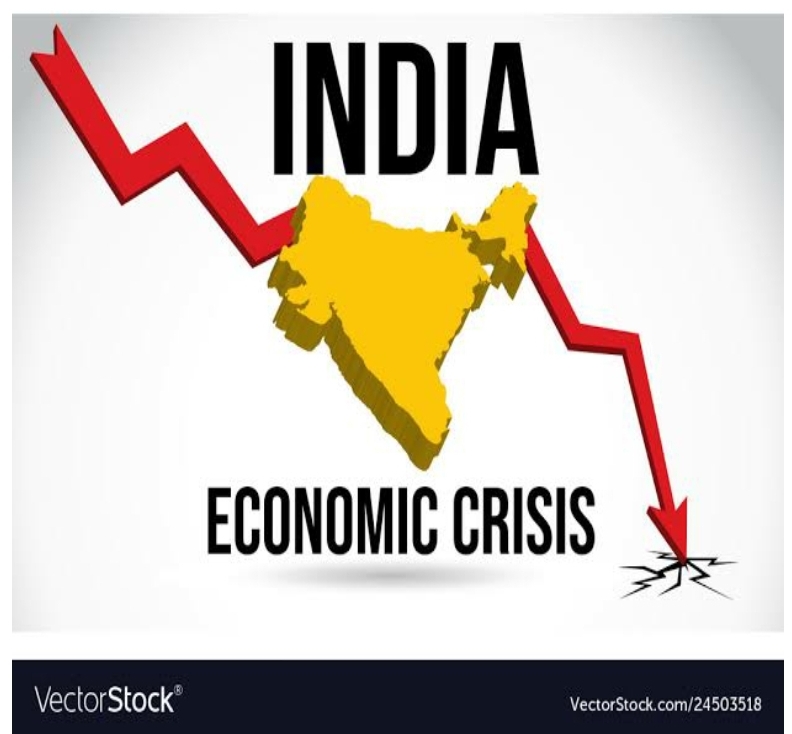The Indian economy is in a state of tailspin crash but this is not a nosedive condition, the foundations of this dooming economy were laid back in the years 2012-2013 during the later reign of UPA 2.0. Inflation was high and to control this inflation growth, the then Chief Economic Advisor Dr. Raghuram Rajan started increasing the interest rates. Not denying the fact that it did not help in controlling the inflation, the adverse effects of this decision were seen later on. The interest rates have become so high that it has become impossible for the small and medium enterprises (the SMEs) to take loan. As a result, the small and medium enterprises started folding up due to lack of money to carry out their business. Folding up of SMEs then resulted into unemployment; the adverse effect was so much so that nearly 700 SMEs were shut down in the industrial region of Jamshedpur. This unemployment led to a sharp decrease in the demand as people had no money to purchase. In the year 2016, the government called in for a demonetization of ?1000 and ?500 notes. People were forced to deposit all their money into their bank accounts; this further graved the situation and decreased the demand. This decrease in demand caused a further decrease in GDP (as less demand means less transfer of money in the economy). All these events paved a way for the tailspin crash of economy of India. The data of World Bank regarding the GDP growth rates of India since 2012 projects constant decreasing GDP.

The expected growth rate of GDP was 1.9 for the financial year 2020. Amidst this sinking economy, the dawn of 2020 brought with it a pandemic named COVID-19; the country was put under the lockdown starting from 23rd March till date. With the lockdown, in came qualms of Financial Emergency; the provision of which has been enshrined in Article 360 of the Indian Constitution which reads-
(1) If the President is satisfied that a situation has arisen whereby the financial stability or credit of India or of any part of the territory thereof is threatened, he may by a Proclamation make a declaration to that effect.
(2) A Proclamation issued under clause (1)—
(a) May be revoked or varied by a subsequent Proclamation;
(b) Shall be laid before each House of Parliament;
(c) Shall cease to operate at the expiration of two months, unless before the expiration of that period, it has been approved by resolutions of both Houses of Parliament:
Provided that if any such Proclamation is issued at a time when the House of the People has been dissolved or the dissolution of the House of the People takes place during the period of two months referred to in sub-clause (c), and if a resolution approving the Proclamation has been passed by the Council of States, but no resolution with respect to such Proclamation has been passed by the House of the People before the expiration of that period, the Proclamation shall cease to operate at the expiration of thirty days from the date on which the House of the People first sits after its reconstitution unless before the expiration of the said period of thirty days a resolution approving the Proclamation has been also passed by the House of the People.
(3) During the period any such Proclamation as is mentioned in clause (1) is in operation, the executive authority of the Union shall extend to the giving of directions to any State to observe such canons of financial propriety as may be specified in the directions, and to the giving of such other directions as the President may deem necessary and adequate for the purpose.
(4) Notwithstanding anything in this Constitution—
(a) Any such direction may include—
(i) A provision requiring the reduction of salaries and allowances of all or any class of persons serving in connection with the affairs of a State;
(ii) A provision requiring all Money Bills or other Bills to which the provisions of article 207 apply to be reserved for the consideration of the President after they are passed by the Legislature of the State;
(b) It shall be competent for the President during the period any Proclamation issued under this article is in operation, to issue directions for the reduction of salaries and allowances of all or any class of persons serving in connection with the affairs of the Union including the Judges of the Supreme Court and the High Courts.

Although the financial structure is stumbling, yet it is not as grave a situation to declare a Financial Emergency. There are other legal remedies which can be useful under the section 2D of the Disaster Management Act of 2005. COVID-19 is a grave occurrence arising from natural causes; Section 12 of the same has provision to deal with the requirements to be provided at the time of crisis. It deals with the requirements to be provided with things like cereals, shelter, and provisions for senior citizens, ex gratia assistance for restoring livelihood and such other reliefs which are deemed to be necessary. Moreover, Section 13 provides for recommending relief in repayment of loans or for grant of fresh loans to the persons affected by disaster on such concessional terms as may be appropriate. These sections address the rising trade of concerns for facilitating relief to the unorganized sector, small-scale industries, micro enterprises, etc. where short-term loans, food essentials will be provided. Let us also highlight the phrase ‘other phase’ where government can lay down any number of relief measures for restoring standard livelihood.

In addition to what is mentioned earlier, mention should also be made of the economic relief package that the Government of India has provided. These things sum up to the fact that imposing a Financial Emergency would be an injustice to both the State Government as well as to the people of India. Not denying the fact that the upcoming days will not be good for the economy (chances are there that GDP growth rate may become negative by the start of 2021), yet there wouldn’t be a situation of Financial Emergency. India has come out of situations like this in the past (year 1991 when the foreign exchanges had exhausted), and we will come out of it this time too. Till then, let us all hope for the best.
By Kirti Kashyap ‘Taijas’
Sources Cited:
- Constitution of India
- Disaster Management Act of 2005
